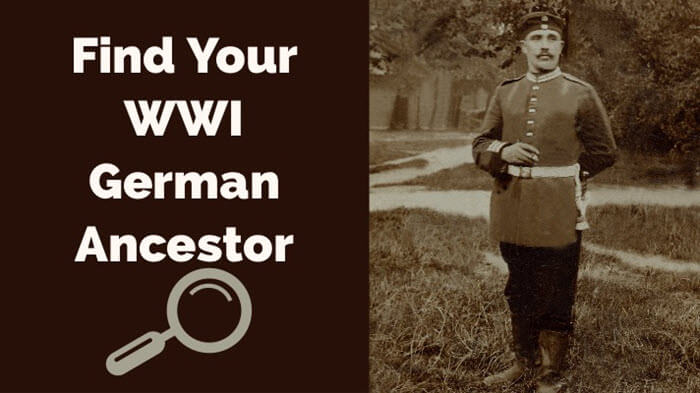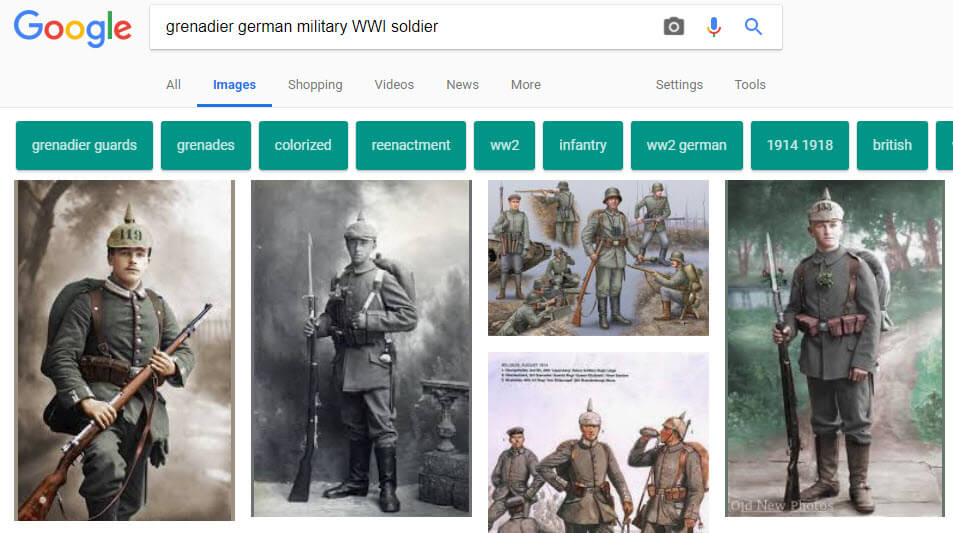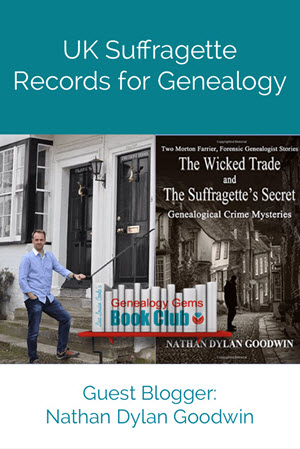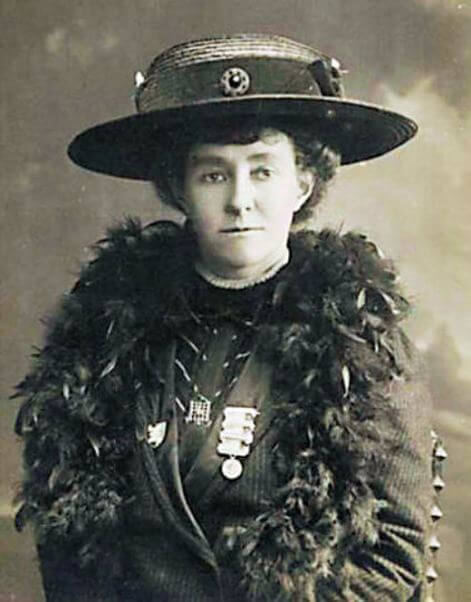Blog


These UK Suffragette Records Tell Amazing Stories
UK suffragette records tell amazing stories about the women and men who fought the British government for women’s voting rights a century ago. Nathan Dylan Goodwin, the popular Genealogy Gems Book Club author, shares three of his favorite sources for discovering suffragette stories like the one that unfolds in his new short story, “The Suffragette’s Secret.”
Thanks to Genealogy Gems Book Club author Nathan Dylan Goodwin for contributing this guest blog post.
My new short story, “The Suffragette’s Secret,” features a fictional main character, Grace Emmerson, a suffragette living on the South Coast of England in Brighton. But many of the events and supporting characters described in the story are real. In the story, forensic genealogist Morton Farrier uses real historical documents while working in the modern day to uncover Grace’s suffragette past. Many of these historical records (over 55,000 of them) are now available online in the FindmyPast Suffragette Collection.
Morton and I would recommend spending some time browsing this fascinating collection from a pivotal moment in women’s history. Even if your own ancestors did not make the headlines, they may have been involved at a more local level. And the lives of both women and men in your family may have been affected by suffragette activity, whether or not they are mentioned by name in the records. So it is a collection definitely worth exploring.
UK suffragette records I love
1. Suffragette Amnesty register (HO 45/24665)
With the threat of war and its having become inevitable in August 1914, most of the dominant suffragette organizations, including the Women’s Social and Political Union suspended all militant activity. In response, the British government gave an amnesty to more than one thousand women (and some men) who had been arrested for the cause. Their amnesty records are part of the Findmypast Suffragette Collection and also searchable at Ancestry.com (if your subscription includes UK records).
Alongside the names of those arrested comes the date and court where the charge was originally brought – an excellent starting point for further research.
In “The Suffragette’s Secret,” I referenced the real-life case of Nellie Godfrey. In the Amnesty Register of 1914, her name and references appear thus in the image shown here (the links lead to Google Maps references of the Bow Street magistrate’s court):
Godfrey, Nellie
Bow Street 9/7/09 180.782
Bolton 8/12/1909 186.626
Bow Street 27/11/11 203.651

Taking the second reference as an example of where this record can lead, this shows that Nellie appeared on the 8th December 1909 before Bolton Magistrate’s Court.
Searching for these criteria in Findmypast’s Suffragette Newspaper Collection brings up the following story: ‘Nellie Godfrey, of London, was charged at Bolton yesterday with throwing a missile at a motor car in which Mr [Winston] Churchill rode to his meeting on Tuesday night, and was fined 40s or seven days. Defendant went to prison. It was stated that the missile thrown was a piece of iron wrapped in a paper bearing the words “Thrown by a woman of England as a protest against the Government’s treatment of political prisoners.”’
For most of these records, further information exists at the National Archives. Prefixing the reference number with HO (for Home Office) and typing it into the document search box (HO 186626) on the National Archives website brings up a link to a document which details Nellie’s arrest and time in prison. (Unfortunately, these records are not yet digitized, but can be ordered.)
2. Calendar of Prisoners
These records, about suffragette prisoners who were tried in the London courts between 1911 and 1914, feature some of the prominent names from the movement, including the famous Pankhursts (one of whom is shown in the Calendar of Prisoners image below):

One record found in Crim 9/58 is that of Emily Wilding Davison, shown here. She was killed when she threw herself under the king’s horse at Epsom on 8th June 1913. Among several interesting details found in a document pertaining to an earlier arrest in December 1911 are to be found the following facts:
Emily Wilding Davison, 36, a tutor, arrested for ‘unlawfully and maliciously placing in a Post Office letter box a dangerous substance likely to injure the same and its contents and attempt to commit like offence.’ She was jailed at Holloway for six months.
This type of militancy, placing dye or some other kind of corrosive liquid into a letter box in order to render the letters inside illegible, was common among suffragettes and an act often making the local newspapers, which can be read about as part of the Suffragette Collection.
Further records for Emily Wilding Davison exist in the FindmyPast Suffragette Collection, including HO 144/1150/210696, which details several of her actions and subsequent convictions.
3. Suffragettes’ Complaints against Police (MEPO 3/203)
During my research for “The Suffragette’s Secret,” I visited the National Archives and accessed the Suffragette’s Complaints against Police, which was then not available online. At 286 pages, “Complaints against Police” provides an illuminating account of how the police handled a large group of suffragettes who had converged on Downing Street, intent on gaining access to the Prime Minister’s (Herbert Asquith) residence. A sample appears here, to the right.
The file includes several accounts from the perspective of the police involved, in which they all strenuously deny any harsh treatment of the women whom they encountered there. In contradiction to this are the numerous and varied statements from men and women involved in the altercation in which physical abuse and violence by the policemen was described as wide-spread, as this statement from the file attests:
‘About 2.15 in Parliament Square PC A.R.82 struck a Women’s Social & Political Union member in the face. At about 2.30 between Parliament Square and Cannon Row, almost opposite Palace Chambers, PC R.R.21 twisted the arm of and shook furiously a lady he had arrested. She was not resisting arrest. During the raid in Downing Street yesterday evening PC 449B got his knee into the middle of one woman’s back and knocked her down. PC 456E afterwards banged the same woman’s head repeatedly against the railings. I can produce my witness at any inquiry.’
This Suffragette Collection from FindmyPast contains a wealth of information useful to genealogists, social historians and those interested in women’s history. Other records available include cabinet papers, the treatment and force-feeding of political prisoners and various actions and imprisonments of the women men and men involved in the fight to gain the ability to vote.
Nathan Dylan Goodwin is one of our favorite Genealogy Gems Book Club authors! He’s a must-read for anyone who loves a good mystery–especially when the solving is led by a skilled (and very likable) forensic genealogist. Nathan first joined the Genealogy Gems Podcast to talk about his book The Lost Ancestor, but he now has several Morton Farrier, Forensic Genealogist books out. The newest one is a 2-for-1 bonus: “The Suffragette’s Secret,” the short story, is published with his new full-length book, The Wicked Trade. Click on these titles to order them–or check out all his books (and other great titles) on the Genealogy Gems Book Club webpage.
Disclosure: This article contains affiliate links and Genealogy Gems will be compensated if you make a purchase after clicking on these links (at no additional cost to you). Thank you for supporting Genealogy Gems!

Finding Hard-to-Find WWI Era German Ancestors
This surprise discovery of a WWI German ancestor on a free website can inspire your own family history research discoveries. Bonus: watch a free video on how to find your German ancestor’s home village!
Following Our German Expert’s Advice
Not long ago, I made a surprising military record discovery. It came about because I was looking at the e-book we put together of handouts of all the sessions we presented in the Genealogy Gems booth at FGS 2016. I was reviewing the notes from one of Jim Beidler’s sessions. (These handouts really are a wonderful benefit of coming by our booth at the big conferences!)
In the handout, Jim recommends des.genealogy.net and I didn’t recall having searched that site before. Here you can search among several kinds of records that have been transcribed or indexed by volunteers, including tombstones, memorial cards, World War I casualty lists and directories.
my first find: WWI German casualty list
Following Jim’s advice, I performed a search and, sure enough, I found a one-of-a-kind digitized document. At first glance it wasn’t clear what I was looking. The result contained a VERY rare surname in my family tree, Sporowski, that appeared alongside the name of my great-grandfather’s tiny home village of Kotten, which is rarely mentioned anywhere. The document was a World War I casualty list dated December 22, 1914! Aside from my great grandfather’s naturalization papers, this was the first time ever I had found the name Sporowski and the town of Kotten on the same page of any document. Just seeing them together gave me goosebumps!
Reading German Gothic Script
In order to confirm that I was reading the German Gothic script correctly, I turned to Google for a quick search of German Gothic Script Guide and quickly found several reliable options. I used the Foundation for East European Family History Studies German-Gothic Handwriting Guide available here.
The guide helped me confirm my suspicions that the first letter of the first word was “G”, and that I indeed had the first letter of the surname correct, “S”. The entry reads:
“Gren. Emil Sporowski – Kotten”
While this document was not for my great grandfather, I had found the first documentation of his brother Emil! (Gustav also served in the military. Here’s his picture, below.)
Understanding WWI German Military Terms
So what did “Gren.” stand for? I suspected “Grenadier,” but I returned to Google and conducted a search of German Military Abbreviations to be sure.




WWI Germany Military Uniforms
I’m a very visual person, so I bee-lined back to Google to get my first glimpse of a Germany Grenadier Military WWI soldier:

WWI German Genealogy Research Success!
What a find in just a few short minutes! And what a lead that may result in additional records that exist for Emil’s military service. (This is the brick-wall family that Legacy Tree Genealogists helped me with recently.)
It was a good reminder that when searching online you never know what you’ll find. Leave no stone unturned — or in this case, no website unsearched — when an expert recommends it, especially if it’s free! And remember to take extra time to familiarize yourself with the sites you search and the collections you find: their original intended purpose, how they are organized, and where they may lead you next.
Learn More Like this
Genealogy Gems will be rolling out the red carpet and more mini training sessions (like the one Jim gave at our booth) at the Southern California Genealogical Society Jamboree (May 31 – June 2, 2018, Burbank, CA) and FGS 2018 (August 22 – 25, Fort Wayne, IN). Come by the booth to check out the schedule and learn how to get the handouts.
How to Find the Germany Villages of Your Ancestors
Here at Genealogy Gems we’re devoted to helping you be successful in uncovering your family history. Here’s a bonus for you below: a videotaped version of Jim Beidler’s RootsTech 2018 Genealogy Gems booth presentation, “How to find your German ancestral village.” Enjoy!

About the Author: Lisa Louise Cooke

Mid-Atlantic and Southern Genealogy: Tips & Record Types
Researching your U.S. mid-Atlantic and Southern genealogy can be a challenge (ever heard of “burned counties?”). These top tips and key record types may help you bust your genealogy brick walls in these regions.
Thanks to Robert Call of Legacy Tree Genealogists for writing this guest post! Learn more about Legacy Tree Genealogists below.
The Challenge
Some of the most difficult genealogical research problems filter down to us through the poor record keeping, burned depositories, and social customs of our ancestors who lived in the Mid-Atlantic and Southern United States. Notoriously challenging, many of the requests that we receive at Legacy Tree Genealogists are to assist others in discovering their Southern ancestors. In this blog post, we’ll discuss some of the key record types we use when solving a Mid-Atlantic or Southern States problem.

Top tips for mid-Atlantic and Southern genealogy
First, three general tips are good to keep in mind when researching Mid-Atlantic and Southern ancestors.
1. Be patient
Research problems from these states generally require much patience—slowly chipping away at the problem at hand, searching out documents, considering the evidence, and letting it simmer. Rushing through a problem will result in missed evidence, conclusions with insufficient proof, or even just accidental errors. Giving a research problem time allows for more evidence gathering, more critical evaluation, and for fresh ideas and potential solutions to emerge from the documents and our analysis.
2. See what’s been done
Evaluate the pertinent work others have done on the same ancestral families. Usually, the best places to find the best research are periodicals such as National Genealogical Society Quarterly, The New England Historical and Genealogical Register (which publishes articles pertaining to all regions of the United States), and The American Genealogist. (The article shown here comes from the National Genealogical Society Quarterly Vol 99:1, March 2011, pp. 5-14.) In addition to these, there are state, regional, and local genealogy journals. [Note from Genealogy Gems: use PERSI, the Periodical Source Index at Genealogy Giant Findmypast.com to search for surnames and other subjects that appear in genealogy journal and newsletter articles. Click here to learn more about PERSI.]
Similarly, use search engines and library catalogs (such as the FamilySearch Catalog, university catalogs, and WorldCat) to discover whether book-length treatments of your family have been published. Because these volumes are usually not published by academic presses, are self-published, and are rarely peer-reviewed, the credibility of each history must be carefully evaluated but could offer important clues for your own research.
Online family trees at the Genealogy Giants, like the Public Member Trees at Ancestry.com or the global Family Tree at FamilySearch.org, may also provide good research or point to the holy-grail source—such as a property deed, family bible, probate document, etc.—that provides the necessary evidence. Of course, there is a lot of bad information floating around the Internet (including in online family trees) so be careful about what you accept as reliable. [Click here to watch a free video comparing the online tree model at Ancestry.com with the tree type used at FamilySearch.org.]
3. Befriend your ancestors’ friends
Pay attention to the extended kinship network and friends of your ancestors. These people often followed similar migration patterns, which can help you discover where ancestors originated, especially as people frequently moved throughout the South. For example, perhaps you know your Fitzpatrick ancestors in Georgia were born in North Carolina, but you cannot determine where in North Carolina. If many of the Georgian neighbors migrated from Rowan County, North Carolina, it would be worth a look in Rowan County’s records for your ancestors. Documents pertaining to aunts, uncles, cousins, or in-laws may shed light on your direct ancestors and help untangle the web of relationships that may not be clear from documents related to your ancestors.
Now for some insight into record types we frequently use for Mid-Atlantic and Southern States problems.
Top records for mid-Atlantic and Southern genealogy
Property records
This record type is one of the most useful when tackling families in the South or Mid-Atlantic regions. Property records document the transaction of real and personal property among the parties to the transaction. This usually means the transfer of land but could also include enslaved people or other high-value items (we’ve even seen the rights to use and sell a patent in designated areas recorded in property collections).
Property was often transferred among family members, which in turn helps the genealogist in his or her work. Family relationships are not always stated in deeds, but sometimes can be inferred from the phrasing. Even a possible relationship can be noted until additional evidence proving or disproving the hypothesis is discovered. And don’t ignore the witnesses! Property records usually include one, two, three or more witnesses attesting to the validity of the transaction and the witnesses were sometimes family.
Less-experienced genealogists sometimes only search the deed volumes, but a county may have kept other types of property records (mortgages being a common one) which should be searched as well. Property records are helpful when researching enslaved ancestors as well because they document the movements among various slaveholders and sometimes the enslaved person’s family relationships. Because property almost always constituted an inheritance—which fell to family members after debts were paid—the distribution of an estate is sometimes documented in the property collections rather than the probate records.
Excerpt from a property transaction between William C. Cross and his wife, Elizabeth, and William D. Cross, recorded in Calhoun County, Alabama. FamilySearch.org.
Probate Records
Probate records are the documents a court generates to distribute a deceased person’s estate. As mentioned above, the property almost always was divided among the deceased’s family members (instances where the testator chose to bequeath his or her property exclusively to non-family which was a rarity). Thus, in the absence of good vital records, as is the case in Southern and Mid-Atlantic states for most periods, probates may offer the necessary evidence to prove a family relationship.
A word of caution: That someone was listed as an heir to a deceased person’s estate is not proof that he or she was a child of the deceased. Frequently, when an heir was not a child, he or she was a grandchild of the deceased, suggesting the parent of the grandchild was deceased and his or her portion of the inheritance then went to the grandchildren. Like property records, probate records can also help in researching enslaved individuals because they were considered property in the law and were included in probate records as property sold to pay debts or bequeathed to the deceased’s heirs.
Excerpt from a 1730s will from Cecil County, Maryland, where the testator leaves property to his “couzens.” FamilySearch.org.
[Ready to learn more about probate records? Click here to read Gems contributor Margaret Linford’s reasons for loving these genealogically-rich records.]
Guardianship Records
These records were created when a minor needed a legal guardian to represent them in legal matters (especially when the child inherited or could inherit property). It was not necessary for both parents to be deceased for a legal guardian to be appointed for a minor child. We have seen guardians appointed in instances when the mother was still alive, but the father deceased, and when the mother was deceased with the father still living. Guardianships can help prove a parent-child relationship or even whether a set of proposed siblings were truly siblings. These records also help prove the death of an ancestor. Guardians were sometimes older siblings, in-laws, grandparents, or extended families, so noting who the guardian was can help crack your Southern or Mid-Atlantic States research problem.

Excerpt from a guardianship bond from Butts County, Georgia appointing a guardian for William, Samuel, and John Shedrick, orphans of Samuel Shedrick. FamilySearch.org.
Civil court records
Once again, this type of record for mid-Atlantic and Southern states research problems often focused on property. When a dispute arose over property ownership, these matters were usually settled in the courts and there is a good chance that the documents pertaining to those proceedings may survive today. Disputes over property ownership may have been caused by conflicts regarding an inheritance. Or, perhaps neighbors argued over where a property boundary was located and the court records may document how the parties came about owning the property—which could have been through the family.
Court records may be more difficult to access because fewer have been microfilmed (the collections at the Family History Library in Salt Lake City, Utah, are a good place to start but are by no means complete) or digitized, so it may be necessary to contact the local courthouse or the state archives. But the patience and effort may be well worth the discoveries.
Excerpt from the 1820s civil actions collection of Macon County, North Carolina, naming Su-e-Killah and Yo-hoo-lah as the children and heirs of Au-back, a Cherokee Indian, and his widow, Ta-nah. Ancestry.com.
While Southern and mid-Atlantic States genealogy research is some of the most challenging research in the United States, solving those “brick wall” problems is exciting and satisfying! Patiently working through the property, probate, guardianship, and court records while searching for our direct ancestors and those connected to them can help extend our ancestries and discover previously unknown ancestors.
Robert Call is a researcher for Legacy Tree Genealogists, a worldwide genealogy research firm with extensive expertise in breaking through genealogy brick walls. To learn more about Legacy Tree services and its research team, visit www.legacytree.com. Exclusive Offer for Genealogy Gems readers: Receive $100 off a 20-hour research project using code GGP100! (Offer may expire without notice.)
Disclosure: This article contains affiliate links and Genealogy Gems will be compensated if you make a purchase after clicking on these links (at no additional cost to you). Thank you for supporting Genealogy Gems!

















